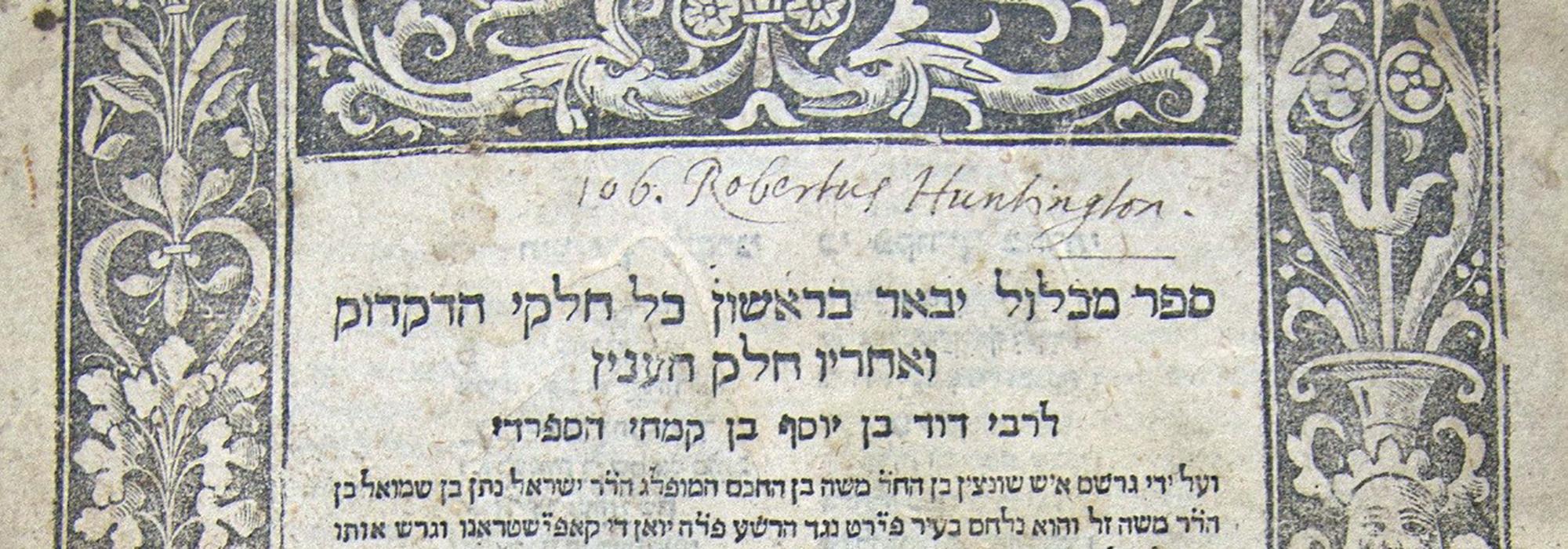
Hebrew Books at Merton
An exhibition held in Merton College’s Upper Library, March to September 2017
The early books containing Hebrew text or printed entirely in Hebrew now in the Merton library can be divided roughly into two groups. In the 16th century, Hebrew dictionaries, grammars, and Biblical texts were acquired as aids to studying the Bible. Most of these books were produced in European centres for use by Christian scholars.
By the second half of the 17th century however, gifted Oxford linguists were eager to learn more about the historic cultures of the eastern Mediterranean. Mertonians like Robert Huntington studied Arabic, Persian, Hebrew, Coptic, and Syriac. He wished to collect important texts in the most authoritative or early editions in manuscript and print. Many of the Hebrew books acquired by Huntington in the Middle East were originally intended for Jewish readership, and some still have marginal comments from their early owners, as well as deletions imposed by Christian censors.
In 2016-2017 specialist cataloguer Dr Rahel Fronda added full descriptions of Merton’s Hebrew books to the University’s online library catalogue. We wish to celebrate this milestone and thank Dr Fronda. Merton’s Hebrew books are now ready for further research.
Printed in the Fifteenth Century
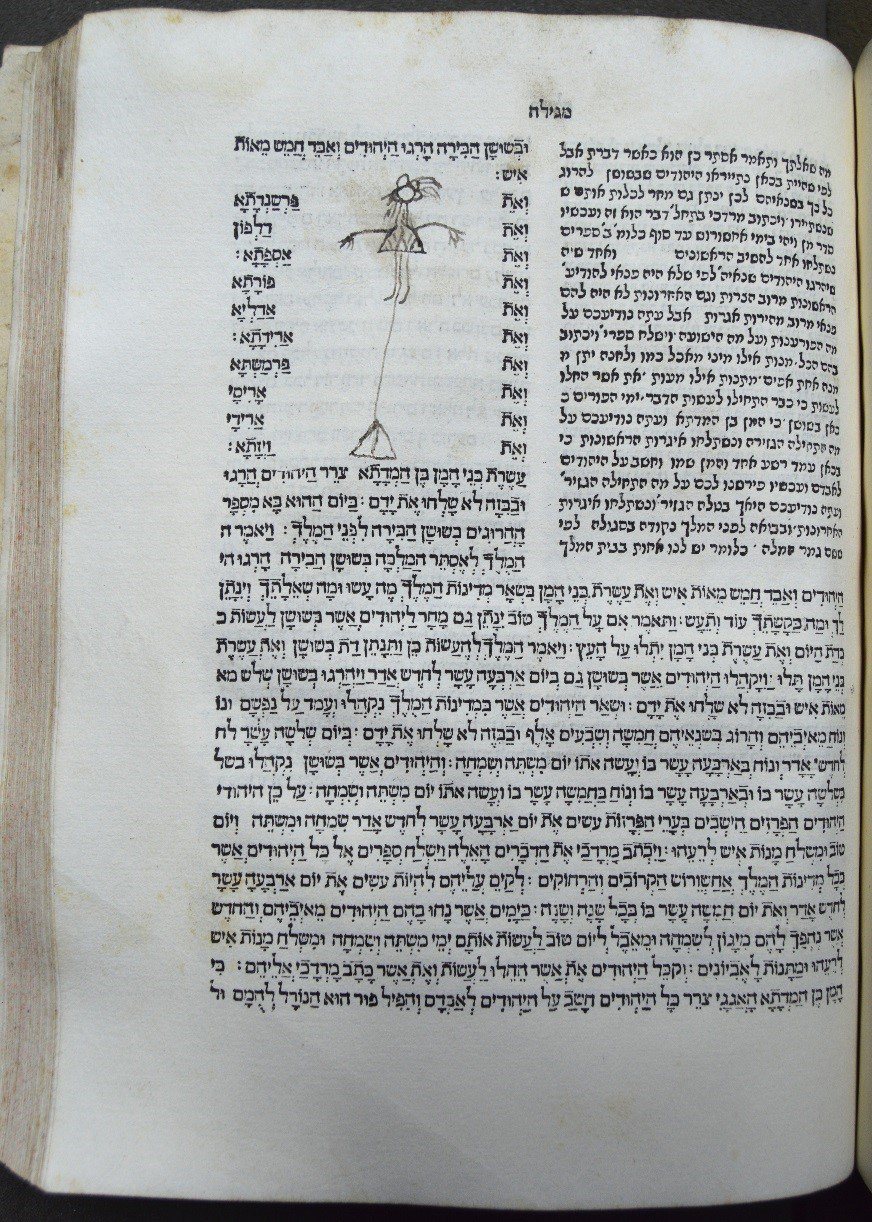
This volume contains the text of Biblical books with commentary by Rashi, Levi ben Gershon and others. It was printed by Joseph ben Jacob Ashkenazi Gunzenhauser in Naples in 1487.
The opening displayed shows the text of the Book of Esther in a square typeface that is easily distinguished from the commentary in the more cursive typeface. At the place in the narrative where the hanging of the ten sons of Haman (oppressors of the Jews) is described, the traditional layout of the list of the sons' names provides a blank space in which a reader has added a rough illustration showing a hanging figure.
Commentaries on the Psalms
![Midrash Te[hi]lim (Constantinople: Samuel ben David ibn Nahmias, 1512). First printed edition. MER 76.F.8 (3) Donated by Robert Huntington.](/sites/default/files/inline-images/03_Midrash-Tehillim_Hebrew-Books_in-page.jpg)
This copy contains numerous marginal corrections and notes written by a reader in a semi-cursive Sephardic script (used by the Jews of Iberian origin). Some printed words have been blacked-out in ink in order to conform to contemporary Christian censorship requirements. Perhaps the same reader also added the pen markings that sub-divide the densely-printed text to aid in reading and finding one’s place. Another reader, perhaps Huntington himself, added small Arabic numerals in the upper margins as an additional aid to navigating the book.
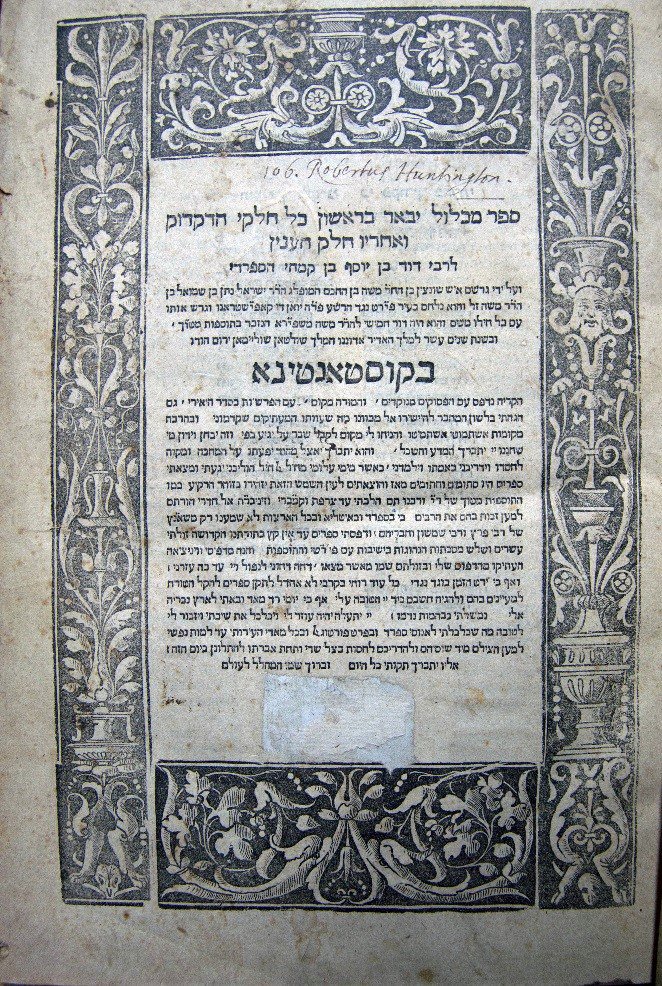
The largest single donation of early printed Hebrew books came to the college as a gift from Robert Huntington. Huntington studied theology and oriental languages at Merton, becoming a fellow in 1658. In 1670 Huntington was granted permission to serve as Chaplain to the Levant Company, based in Aleppo, a position he held for 11 years. During his time in the Middle East Huntington travelled widely, collecting antiquities, manuscripts, and printed books from different religious traditions. When a shipment of 32 books and manuscripts from Huntington arrived at Merton in 1673 they were celebrated as treasures 'bought from the hands of barbarians at no small price'. Each volume, like that shown here was provided with a donation inscription and list of contents.
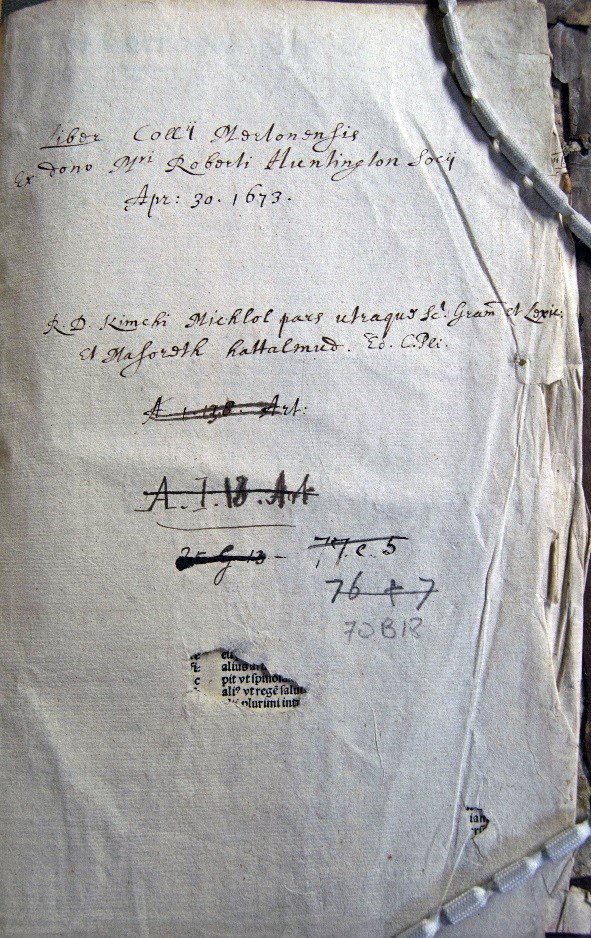
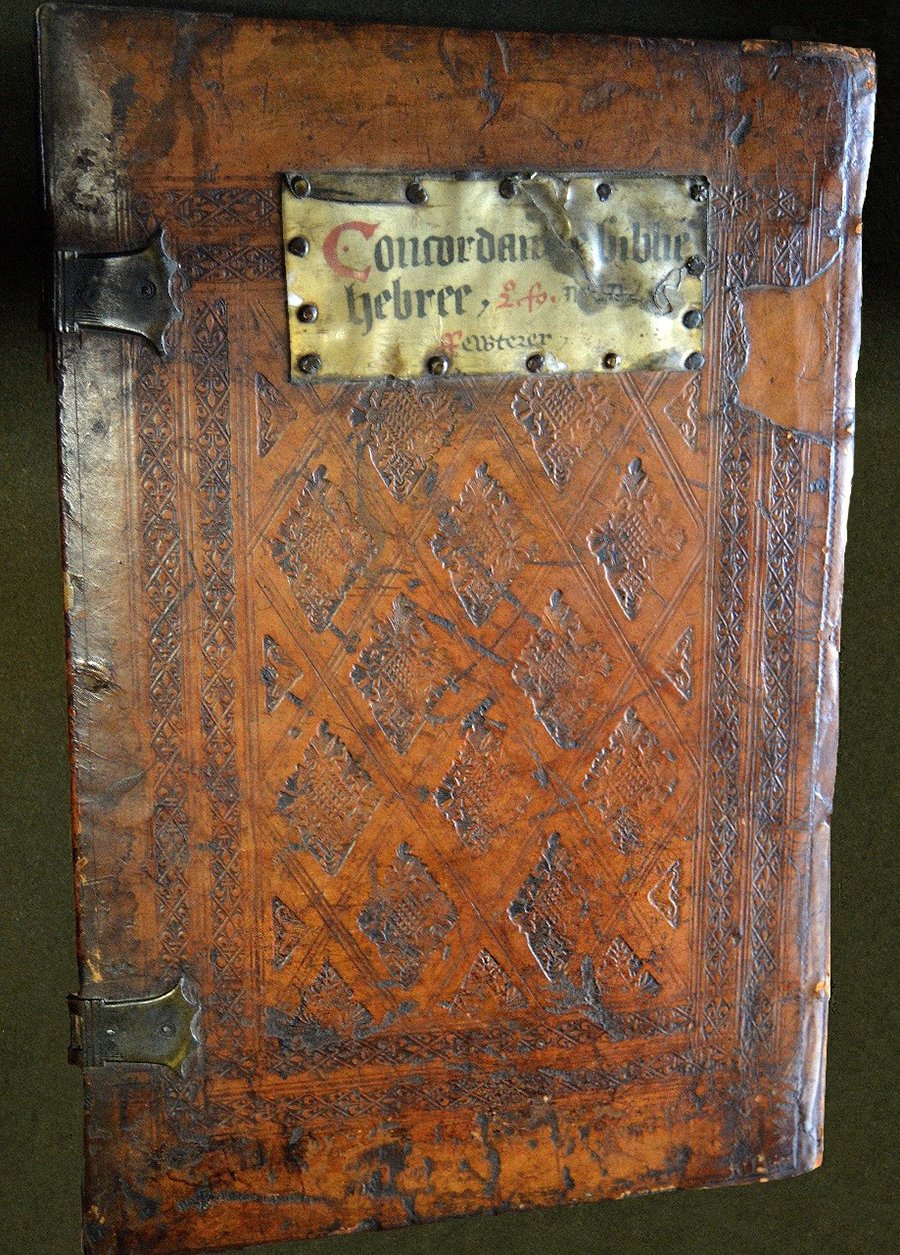
This massive volume, still in its 16th-century binding, is the first printed edition of the first Hebrew concordance of the Hebrew Bible. The format of the label fixed to the exterior of the right-hand board indicates that it may have been associated with the prestigious library of Syon Abbey in Middlesex. The name ‘ffewterer’ written on the last line of the label probably refers to John Fewterer, Confessor-General of Syon Abbey in the 1520s and 30s. An ownership inscription on the title-page links the book to Nicholas Brigham.
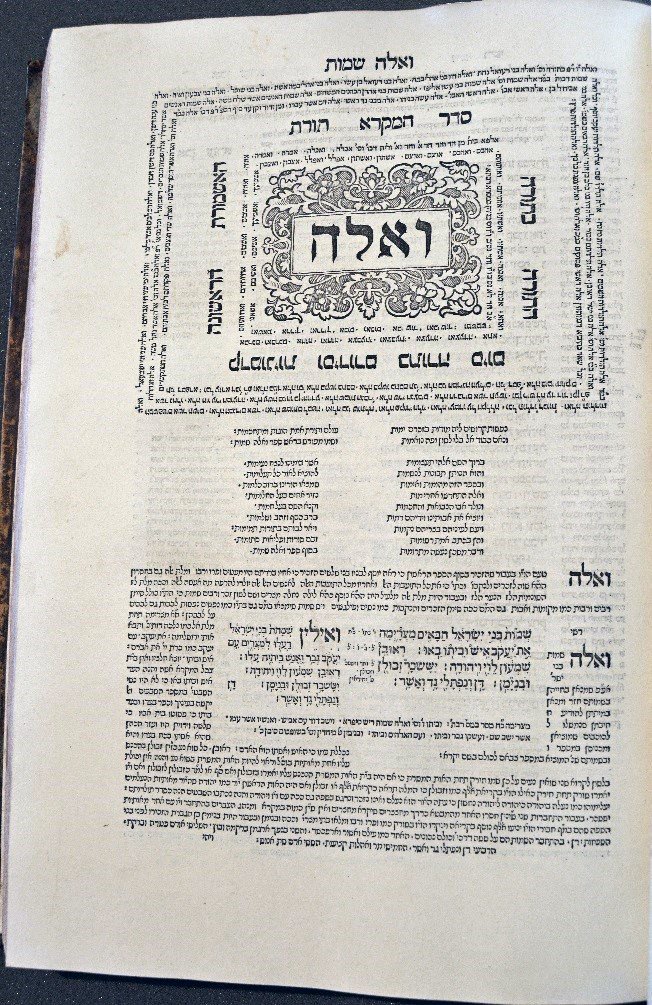
The great Rabbinic Bible of 1524 with commentary comprises four large volumes. The opening of Exodus is displayed here, with the first word in large type, framed by the commentary text. This copy has the ownership inscription of ‘N. Brigami’, or Nicholas Brigham, a senior exchequer administrator, scholar, and antiquary. Brigham had a notable library, and his manuscripts and books can be found in research libraries today. Several early printed Hebrew books now at Merton have a Brigham provenance, but it is still uncertain how and when they came to the college.
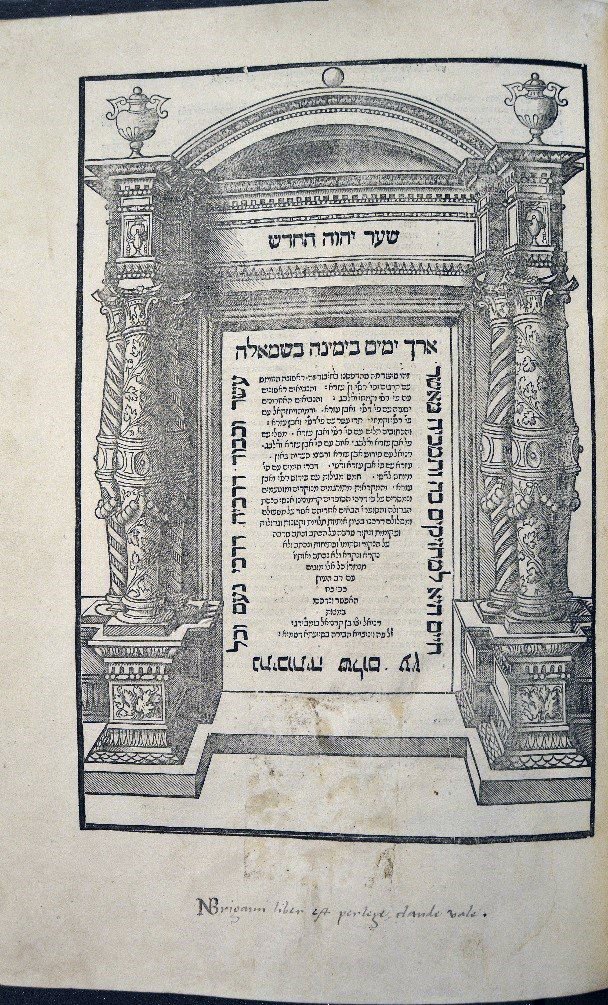
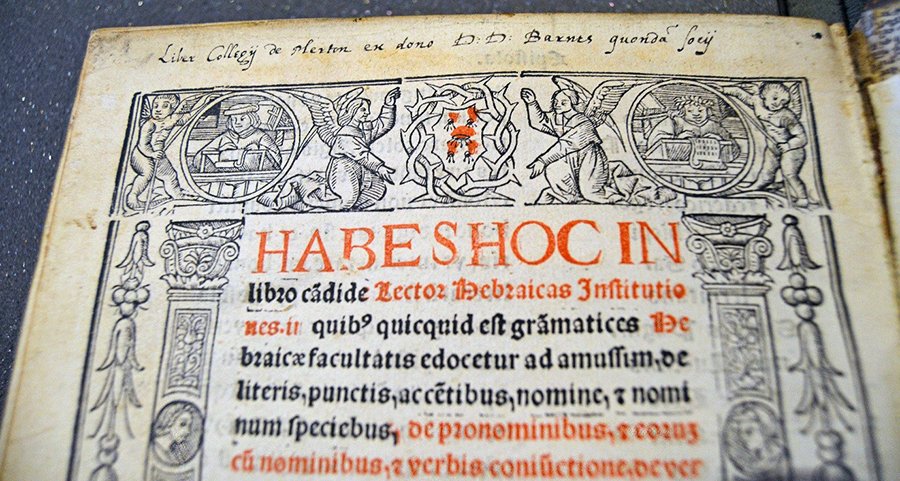
Exhibitions of Hebraic books at Merton have often focussed on those associated with Thomas Bodley and Henry Savile. There is evidence of an interest in learning Hebrew among the books of other 16th-century fellows of the college, including this introduction to Hebrew grammar, once owned by Linacre Lecturer, Robert Barnes (d. 1604). The woodcut depicts the author of the text, the Dominican scholar Santes Pagnino, teaching.
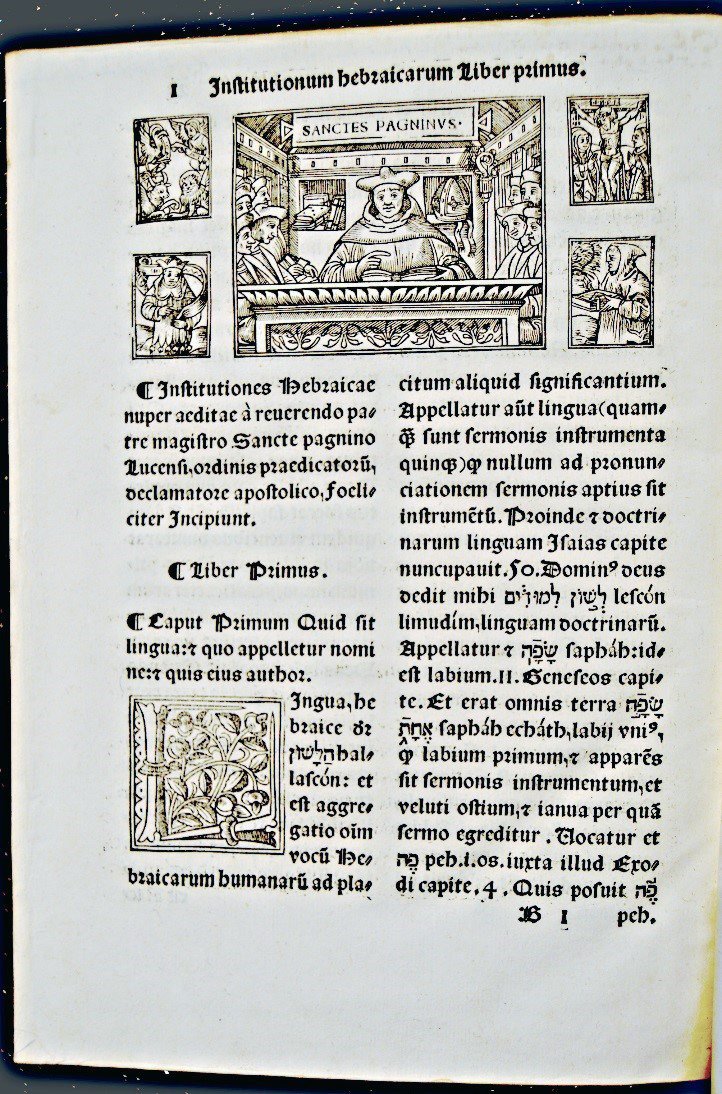
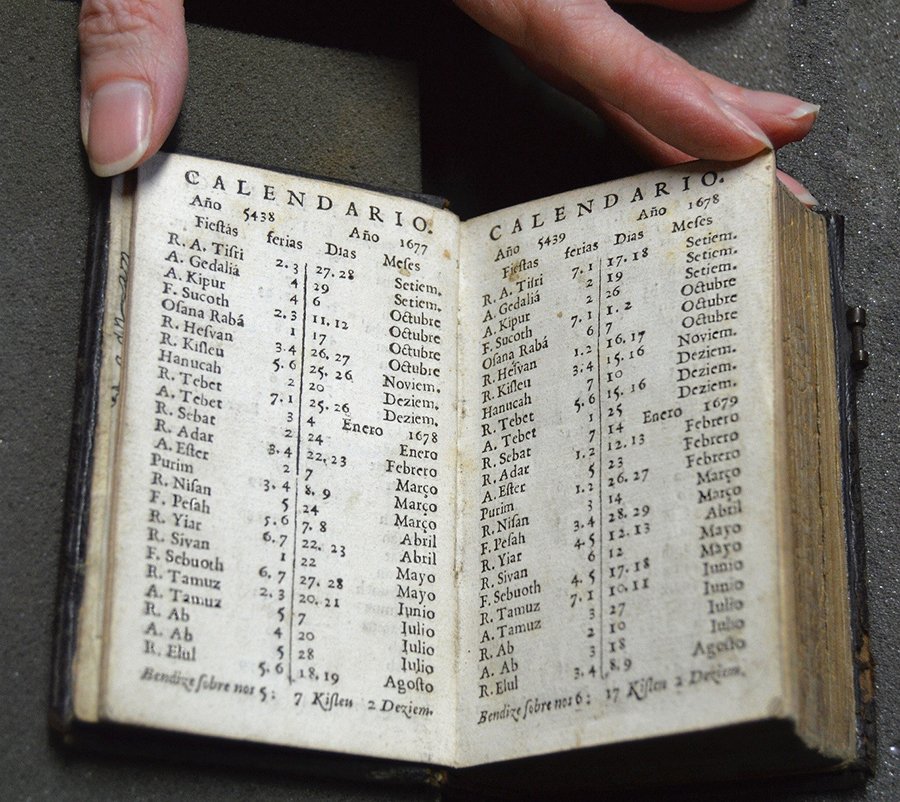
This tiny Spanish calendar of the dates of major Jewish festivals throughout the year would have been a practical guide for a Jewish owner. It is unusual to find such a practical ephemeral work today, and it may have survived because it is bound with two texts on Judaic liturgy printed in Amsterdam in the last quarter of the 17th century.